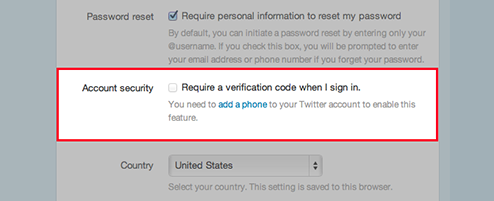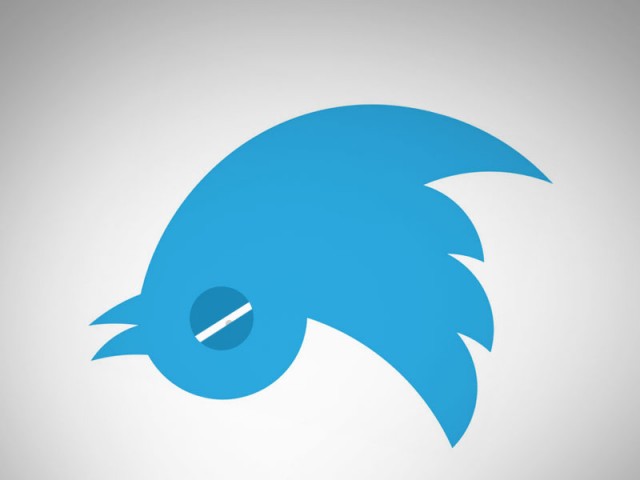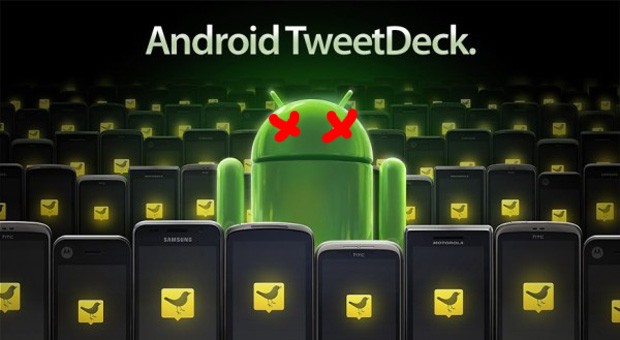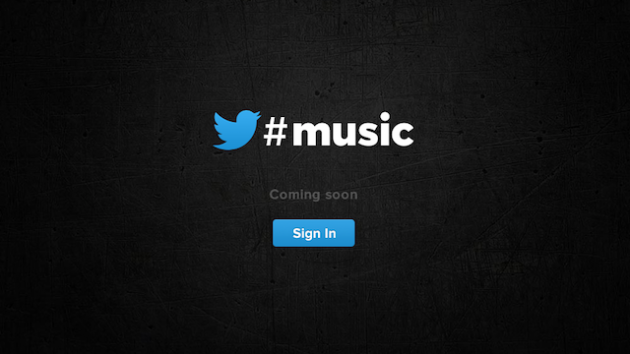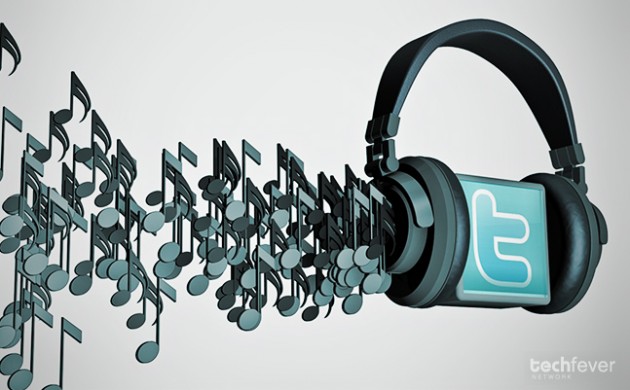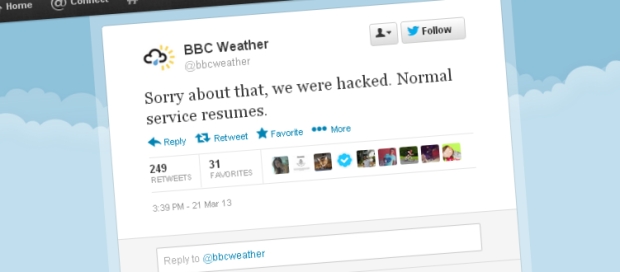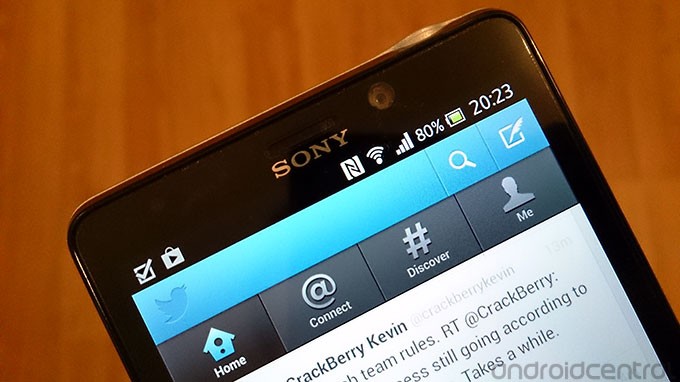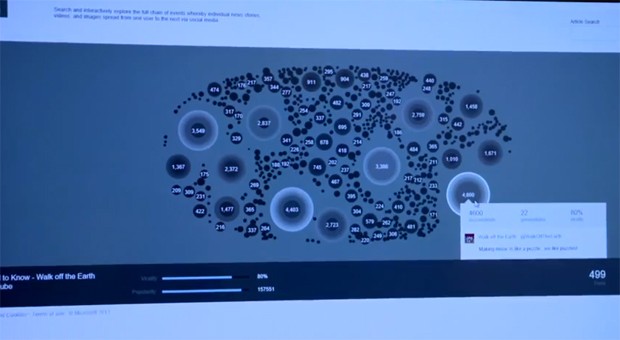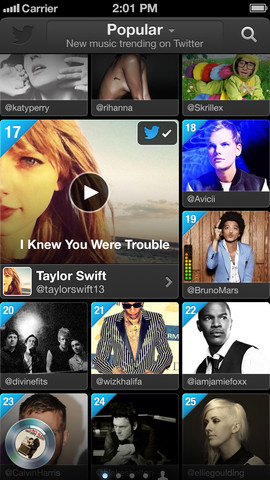 With so much competition already existing in the streaming music world, the Twitter #Music app faces the same problem as every new service -- how do they set themselves apart from the competition? The answer for Twitter is discovery; more specifically helping users discover new musical artists along the lines of the ones they already follow.
With so much competition already existing in the streaming music world, the Twitter #Music app faces the same problem as every new service -- how do they set themselves apart from the competition? The answer for Twitter is discovery; more specifically helping users discover new musical artists along the lines of the ones they already follow.
It takes a few minutes to learn how to navigate the app, but once you understand the ins and outs you'll be flying. There are four screens: Popular, Emerging, Suggested, and #NowPlaying.
Popular features the artists who are currently trending on Twitter. Emerging showcases smaller artists who are building twitter buzz, although at the moment it's not clear how they judge if someone is "emerging" or not. Suggested compiles artists based on who you already follow. And #NowPlaying is based on the music your followers are listening to.
Music is displayed on tiles with the artist's picture or logo. Simply click on the tile and hear the song by that artist. It's a little disappointing that you're limited to only one song per artist to listen to, especially if you're using the most basic function where the music is simply an iTunes preview clip. The service allows you to connect your Spotify or Rdio account to listen to full songs however. Using the app with just iTunes clips feels like a waste of time, but when given access to the full song the potential for music discovery increases dramatically. For instance, I had no idea M83 recorded new music for the upcoming film Oblivion and now I do. Thanks, Twitter #Music.
#NowPlaying is the most actively social component of the service. It shows you what your friends are listening to and specifically which friend recommended it. Given the limited use of the service right now there weren't a lot of recommendations available for checking out, but it was neat to see what one of the obscure rock bands I like was sharing at the moment.
Whether this service strikes you as merely a fun distraction or an exciting new way to discover music will probably depend on how much you use your Twitter feed to discover music. I tested it with two different Twitter accounts, one for a music blog I write for that mostly follows bands, and my own personal account that basically only follows a punk band and rappers I think are funny.
The end result is easy to predict. The more artists you follow on Twitter the better the suggestions proposed for you are going to be. Otherwise you're going to find the to-be-expected list of Top 40 and popular indie rock acts you find in every streaming services recommendations.
It's also worth noting that suggested songs tend to pick older tracks for some artists. The band Alkaline Trio is represented by their newest single "I Wanna Be a Warhol" while indie rocker Kevin Devine brings up his 2005 song "Cotton Crush." "Cotton Crush" is a great song, but Devine has put out three solo albums since then. On one hand I appreciate including deeper cuts in an artist's discography; on the other it seems strange for a new music discover service to reach that deep when it only offers one song by an artist at a time.
Twitter #Music is a clever new way to discover music based on the stuff you already like. It's hard to judge the suggestions too harshly when you take into account they are largely based on the suggestions of mainstream Twitter users. The app more than makes up for it with their personalization based on your own personal use. I'd like to see future updates add the ability to listen to more than one track by a single artist, but even in its current form Twitter #Music is going to be getting a lot of use on my iPhone.
[Source: TUAW]
g(20344788)a(1314583)069210864)


